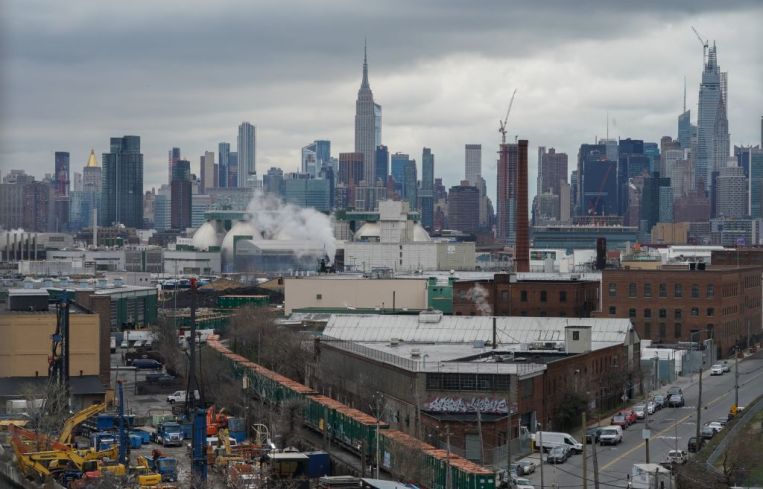Coronavirus’ Economic Impact to Be Most Felt in NYC’s Outer Boroughs
By Nicholas Rizzi April 1, 2020 2:56 pm
reprints
The economic impact from the spread of the novel coronavirus will be most deeply felt in the city’s outer boroughs and among low-income working families, reports show.
A report from the Center for an Urban Future (CUF) released yesterday found that industries suffering from the worst loss of jobs and profits — including restaurants, retail and personal care services — are “overrepresented” in Brooklyn, Queens, the Bronx and Staten Island while Manhattan, with its large share of office jobs, hasn’t felt the impact as strongly as opposed to previous downturns.
“I think more than previous recessions, this one is really being felt in the boroughs outside of Manhattan,” said Jonathan Bowles, the executive of the think tank and the co-author of the report. “In a lot of downturns, the first thought is about Wall Street and the finance industry. This one is different.”
The CUF’s report only studied where jobs are located — not where the affected workers live — but Bowles said previous data show employees of the restaurant, retail and hospitality industry mostly live in the outer boroughs. For example, a previous CUF study showed 80 percent of hotel workers live outside of Manhattan.
A separate study by New York University’s Furman Center released this week showed that nearly a third of households in New York City financially rely on a person likely to lose their income because of layoffs or closures caused by the pandemic. The majority of the workers in those “vulnerable occupations” are low-income New Yorkers and people of color, according to the report.
The CUF’s report found that nearly one in five jobs, or 19.3 percent, in the other boroughs are in the retail and restaurant industries and employed 311,470 people last year. Those two sectors only make up about 15.2 percent of private-sector jobs in Manhattan.
Staten Island has the largest share of its private-sector jobs made up from retailers and restaurants, 23.8 percent, followed by Brooklyn with 19.2 percent.
As local governments forced nonessential retailers to close and restaurants to switch to take-out or to-go models to limit the spread of the virus, owners have had to lay off thousands of workers.
Since March 23, nearly 150 restaurant and hotel entities in New York City have filed Worker Adjustment and Retraining Notification (WARN) Act notices — required by employers to let workers know about upcoming job cuts — that will impact at least 12,000 employees, state records show. The New York City Hospitality Alliance surveyed 1,870 restaurants, bars and nightclub purveyors and found they expected to lay off or furlough more than 67,650 people.
While the office sector has sustained some layoffs — Financial District-based Meridian Capital Group let go of some of its corporate support and back-office groups yesterday and flexible workspace provider Knotel cut half of its worldwide staff last week — the sector hasn’t been hit as hard.
“Office jobs have held up better in this crisis, so far,” Bowles said. “I’m sure we’re going to see job losses in finance, in advertising, in media and in other fields, but right now a lot of office sectors are doing better in part because they can work from home.”
Manhattan has the lion’s share of the city’s office jobs, with 83.2 percent of all jobs in the office sector, according to CUF’s report. That’s followed by Brooklyn with 7.4 percent, Queens with 6.6 percent, the Bronx with 2.3 percent and Staten Island’s 0.9 percent.
Brooklyn has had a huge boom in office construction in recent years, with a CBRE report last year finding more than 2.31 million square feet of either new construction, space being redeveloped, or space that recently came online in the borough. But Brooklyn has only added 35,033 office jobs in the past decade, according to CUF.
“The boroughs still have a surprisingly small number of office jobs,” said Bowles “The boroughs didn’t add that many office jobs over the boom of the last decade.”
One sector represented the most in Manhattan and being hit with huge job losses is the hotel industry, Bowles said. The coronavirus outbreak obliterated travel and caused hotels to lose billions in room revenues, with institutions like The Plaza Hotel and The Carlyle Hotel laying off hundreds of workers.
Of the total 52,555 hospitality jobs in the city, Manhattan has 87.4 percent, according to the report. But the other boroughs have started to catch up; they’ve added hotel jobs at more than twice the rate of Manhattan from 2009 to 2019.
The findings suggest that the outer boroughs will be hit the hardest from the pandemic and Bowles said it would make sense for them to add more office sector jobs in the future.
“I think it would add balance to the economy of each of the boroughs, I think it would help in a crisis like this,” he said. “The boroughs should really make it a point to try to diversify their own economy by adding more office jobs.”


